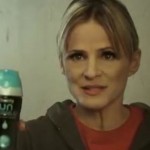Boomerang Commerce is all about price sensitivity. Mercent is all about marketing effectiveness.
Both of those companies are on the right path, to be sure, but there is a larger universe of customer interests to take into account.
The problem that I called the “Jed Clampett scenario” in my last post is that employees facing customers don’t know anything about that customer in terms of their buying potential, their purchase history, their tipping history (for restaurants), their customer service history – none of that (unless it’s your neighborhood barista who sees you every morning and knows you want a latte and a breakfast sandwich). Because they don’t know that, they great every customer equally, and that only works well in some places (Disney has an awesome policy which is that no Guest can get observably different treatment). If you know these things about a customer – you can instruct your employee to say just the right thing to the customer, whether they are a first timer or a 1,000th timer.
Over the last couple of years with work we have done with Disney, Starbucks, and others it has become clear to me that when a customer initiates an experience, be it in a retail store, a theme park, a restaurant, a hotel, or even an online purchase, they have chosen where they are for one of five reasons. Some of them are pretty obvious, one in particular is not, and it might be the most valuable.
1) Best Price. Some people know what they want and will go to great lengths to get the best price. If you have ever heard of the chaos theory of economics (from 2000 Nobel prize winner Dan McFadden) – people will do things like drive 100 miles, and burn $10 in gas, to save $5 on a leather jacket. So it’s by no means a rational mathematical model, but in general, in physical experiences like retail stores, it’s generally a race to the bottom with Amazon for the best price for something, but that’s what Boomerang Commerce is working to help everyone address. That’s a big mountain to climb, but they are on the right track.
2) That Product. Some products you can’t get anywhere else. In Seattle there is a burger place with only six locations called Dick’s, and if you have ever tried their burgers, you know you can’t get them anywhere else. Some products are like that and they will cause customers to go to great lengths for that one product.
3) Speed of Service. Some people are not in a rush and don’t mind shopping for hours, or waiting half an hour to get served their food after they order. Others are in a rush, and they may be willing to compromise on selection, price, and service, to get in and get out as fast as possible. It can be hard to figure this out unless they say this is their #1 priority, but many places aren’t trained or equipped to treat them any differently from any other customer – and speed of service people aren’t likely to return there when they are in a hurry next time. Even with fast food places, there is a spectrum of just how fast it is.
4) Loyalty Recognition. Some people go back to the same place because they like to be recognized, sometimes being recognized is reward enough, other times people want free things, or discounts, or selections of items not available to the less loyal. Remember Norm from the TV show Cheers? Everyone knew his name and shouted it when he walked into the bar. The trick here is getting through the nuance of how the customer wants to be rewarded and getting away from spending money on your already loyal customers (you want to spend money on the almost loyal). BigDoor’s non-dollar backed rewards are a great way to recognize the loyal, almost loyal, or previously loyal with things that don’t cost anything. I see Kimpton and others have embarked on new loyalty programs and it’s clear that organizations are seeing that it’s not just discreet customer transactions that contribute to a customer loyalty “score” it’s Tweets on Twitter, Facebook likes, everything. So just as customer relationship management (CRM) is becoming a more real-time Customer Experience Management function, Customer Loyalty Management is very likely one of the next big enterprise software plays. My money is on BigDoor.
5) Anonymity. This is the one the catches everyone off guard, but when they hear it, it makes all the sense in the world. We heard of the case study at Jack-in-the-box where they added kiosks in their quick service burger restaurants. Initially the idea was for them to be a bit like airport check in kiosks as a way to break up the line and have people stand, waiting patiently for their number to be called so they can receive their white and red bag with the Jack-in-Box logo in the side. It did break up the line, as planned, but it did something totally unplanned – ticket prices doubled at the kiosk. DOUBLED. Some of it was explained away as being a result of people not feeling the pressure of the person behind them in line, so they could take their time and order more stuff, but what turned out to be the big reason was the realization that people order more indulgent things at Jack-in-the-box when they are not face to face with an order taker who might judge them for ordering the triple cheeseburger with bacon. It’s probably coarsely analogous to being in the confessional booth. Something similar to this happens in places like Starbucks when people order a drink like a mocha, and they ask you if you want whipped cream – some people probably wish there was a way to wink or gesture the “yes” so people wouldn’t hear they are indulging today. This is really powerful to know that in some cases people behave very differently, and pay double, when they are anonymous.
So if you can know which of these things is most important to your customer, and you know their lifetime buying history, and you know whether or not they had a great, or poor. customer service experience last time – not only can you get all sorts of cool management graphs around customer trends and patterns to inform future product management as well as marketing and training efforts, arguably more importantly, you can direct the employee facing “that” customer to say just the right thing to that customer as they arrive whether it’s “Hi Bob, can I get your favorite martini started for you” or “Hi Bob, so sorry you had such a long wait last time, we will seat you right away” or “Hi Bob, today your martini is on us” 0r something else.
It’s all possible now, places like Disney, Macy’s, Amazon, Starbucks, and Jack-in-the-box have figured out what they are going to do about these.
Have you?
* * *
 Then Honda really hit a home run with its CR-V ad (here). Knowing that it needs to target the baby boomer generation with ads, getting Matthew Broderick to reprise his role in Ferris Beuller’s Day Off was probably not a bad idea for anyone, but to align it with its current marketing emphasis on spending time away, this really hit the nail on the head for them. So while Audi reached into the what’s hot today, Honda reached back to what was hot when baby boomers were kids to get something to resonate with them.
Then Honda really hit a home run with its CR-V ad (here). Knowing that it needs to target the baby boomer generation with ads, getting Matthew Broderick to reprise his role in Ferris Beuller’s Day Off was probably not a bad idea for anyone, but to align it with its current marketing emphasis on spending time away, this really hit the nail on the head for them. So while Audi reached into the what’s hot today, Honda reached back to what was hot when baby boomers were kids to get something to resonate with them. Downy Unstoppables, here, did something a bit lot Honda in going back to the past, getting Mean Joe Green to to a repeat of his Coke commercial from the ’70s (
Downy Unstoppables, here, did something a bit lot Honda in going back to the past, getting Mean Joe Green to to a repeat of his Coke commercial from the ’70s (